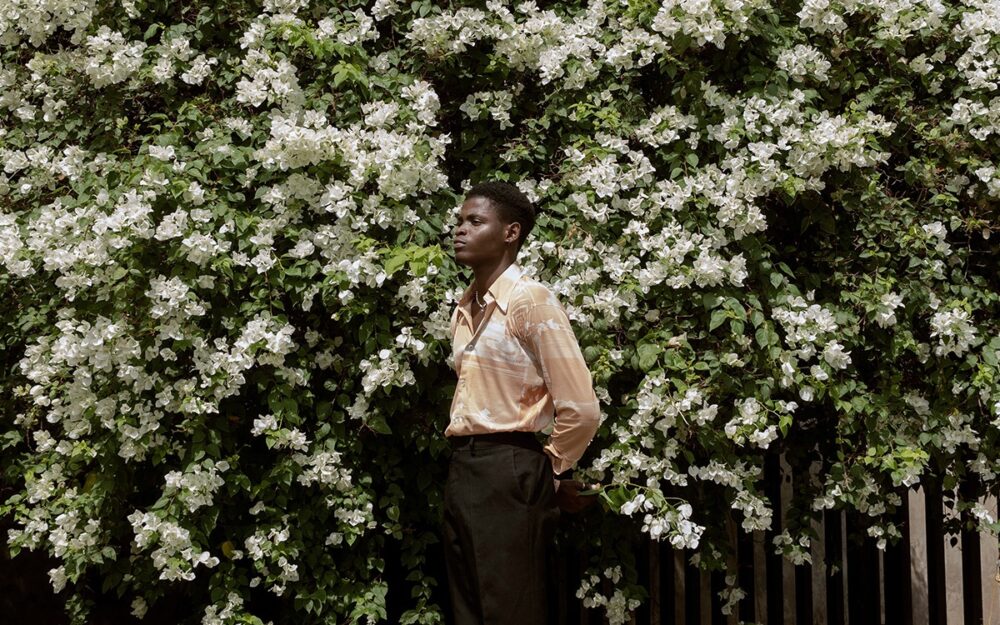
Close your eyes and imagine your neighborhood in 30 years. Is it covered in the grime of smog, or is it shaded by trees? Can you see the sky, or is it glowing orange from wildfires? Are kids able to play outside? Most of the stories we hear about climate change, from irrevocable pollution to unbearable heat, lead us to picture the worst of how our communities might evolve or adapt. But when we push ourselves to imagine a better future, parks and green spaces are often at the heart of that vision.
In resilient, healthy communities, we see more tree canopy, layers of leaves and branches that shroud the ground, native plants, and safe places for people of every age to come together. We see a restored and lifelong connection to nature. We see what communities across the country are now establishing: park equity—the fair and just distribution of parks and green spaces so all communities have access to these health-promoting resources.
When you live in an urban area significantly warmer than surrounding rural areas, otherwise known as urban heat islands (UHI), the lack of parks and green spaces impacts you and your family’s health. In fact, proximity to green space increases life expectancy by decades. This is because trees and other plants filter air, remove pollution, buffer noise, cool temperatures, filter stormwater, and replenish groundwater. As cities try to protect residents from the worsening climate crisis, like providing emergency services for the heat ahead of the summer, it’s important we focus on near- and long-term solutions that address root causes of climate injustice and health inequities, such as green spaces.
Green spaces are not a nice-to-have for neighborhoods; they’re essential community infrastructure. And if approached correctly, increasing equitable green spaces is a form of racial justice and environmental justice—such as repairing land in neighborhoods of color that have been used as toxic dumping grounds for decades and repurposing those spaces instead at the direction of the community, as we see in South Los Angeles.
In resilient, healthy communities, we see more tree canopy, layers of leaves and branches that shroud the ground, native plants, and safe places for people of every age to come together.
Promising Models for Change
In Los Angeles, CA, Physicians for Social Responsibility Los Angeles (PSR-LA) is organizing alongside and with South Central LA’s predominantly Black and Latinx communities to undo decades of harm that toxic chemicals have inflicted on their neighborhoods. Residents are working to assess the environmental and health burdens associated with former oil drilling sites and other contaminated lands. They’re working to change brownfields—where the soil has been saturated with harmful chemicals—into healthy green spaces, led and designed by people who live next to them. Going beyond traditional restoration practices, they’re advocating for policy changes that will ensure equitable park planning and soil restoration processes, as well as community stewardship of the land. We should be able to grow edible food in our yards and community gardens without worrying about the toxicity of the soil. PSR-LA is going to make that a reality.
In Phoenix, AZ, Chispa Arizona—a grassroots environmental justice organization—organizes Latinx residents to combat extreme heat while building green spaces through policy change. Latinx communities in Arizona are more likely to experience heat-related illness and death because unjust neighborhood designs left their streets exposed to the brutal desert sun—it’s been 101 degrees in Phoenix since May. Chispa Arizona is calling for the city’s tax spending to prioritize the health disparities borne of disinvestment in communities of color, securing equitable access to clean air and water; cooler, greener, healthier neighborhoods; and a safe climate for generations.
Green spaces are not a nice-to-have for neighborhoods; they’re essential community infrastructure.
Hope Community in Minneapolis, MN, is a multiracial organization that mobilizes Black, Indigenous, and people of color for policy and systems change. Their Parks and Power campaign has been active in the park equity space for nearly two decades. Their many successes include pushing Minneapolis park planners to utilize a racial equity impact analysis—a practice now recognized as an example for other cities. Together, Hope and its resident leaders influence policies and funding to bring the needs and priorities of communities of color first. Through participatory budgeting processes, organizing, and holding local leaders accountable, they are building and supporting racial equity in Minneapolis’s parks. They’re flipping the systems of power so the people with first-hand experience, the people who care most about the problems the city government is trying to solve, are also the ones developing solutions.
This work holds a common thread: it is moving equity-focused policies and practices forward to reverse decades-long park and green space inequities in Black, Latinx, and Indigenous communities nationwide. At Prevention Institute, my work for People, Parks, and Power (P3) supports 14 community partners across the country, including these three who are building community power and advocating for healthier communities—and winning.
Sign up for our free newsletters
Subscribe to NPQ's newsletters to have our top stories delivered directly to your inbox.
By signing up, you agree to our privacy policy and terms of use, and to receive messages from NPQ and our partners.
Building Power, Not Just Parks
Just as discriminatory policies and disinvestment created park and green space inequities, these problems can be re-envisioned more equitably. Neighborhood residents, city planners, parks departments, health professionals, and funders all have important roles to play in establishing park equity and building equitable green spaces in their communities. It’s critical that those closest to the problem with lived experience of the inequities at hand are the same people shaping solutions. This means building power, not just parks.
To do that, we must change processes and transform systems that reproduce present-day outcomes. We need to hold systems—and the decision-makers within those systems—accountable for closing equity gaps. A recent multi-sector review shows that most local government agencies and nonprofits are focused on projects for green space (like transforming vacant land into parks) without a focus on public policies that can create change at scale. Elected officials and funders can partner to advance policies that require community engagement for park development, for example, or land use policies that facilitate access to green space, such as Los Angeles’s Green Alleys program. We must change not just where parks and green spaces are built but who determines what happens in those spaces and who they’re built for.
We don’t have to look far to see models of this approach and the fundamental impact it can have on people’s lives today and into the future. Communities across the country are reclaiming and rebuilding green spaces and parks through equitable processes centered on racial and environmental justice.
Following the Communities’ Lead
Equitable parks and green spaces within communities are key to advancing environmental justice on the community level. But for new efforts to interrupt the systems that created today’s inequities, funders, policymakers, environmental organizations, and conservation groups must follow the lead of grassroots community organizations and advocates and build power with and alongside residents.
Racial justice and climate justice are key to community health; green spaces and park equity sit at the intersection of these issues.
The environmental movement has work to do to fully adopt principles of equity in practice. A key part of that is following the leadership of and working in partnership with communities of color. For example, the top-down approaches of some mainstream environmental groups resulted in a lack of engagement to understand residents’ needs and led to poor alignment of park design with resident preferences, or worse, gentrification and displacement.
Racial justice and climate justice are key to community health; green spaces and park equity sit at the intersection of these issues. They are essential to the material conditions of our neighborhood, our lives, and our kids’ and neighbors’ lives. Funders, local policymakers and parks departments, and environmental and conservation advocates who search for solutions to the health disparities we see exacerbated by decades of environmental injustice must follow equitable practices to make real change.
Communities across the nation are pursuing park equity as a way to advance racial justice and heal neighborhood health inequities that are worsening with climate change. We can build greener, more temperate neighborhoods that support community health—if we follow their lead.
The views expressed in this article do not necessarily reflect the views of the Doris Duke Charitable Foundation or the Robert Wood Johnson Foundation.









